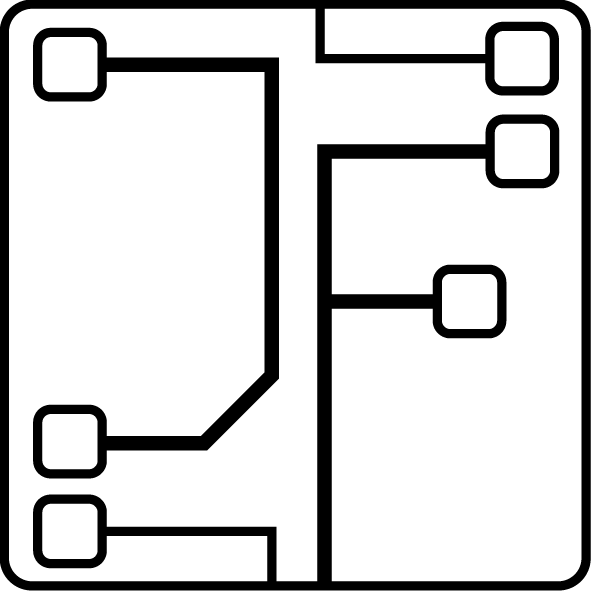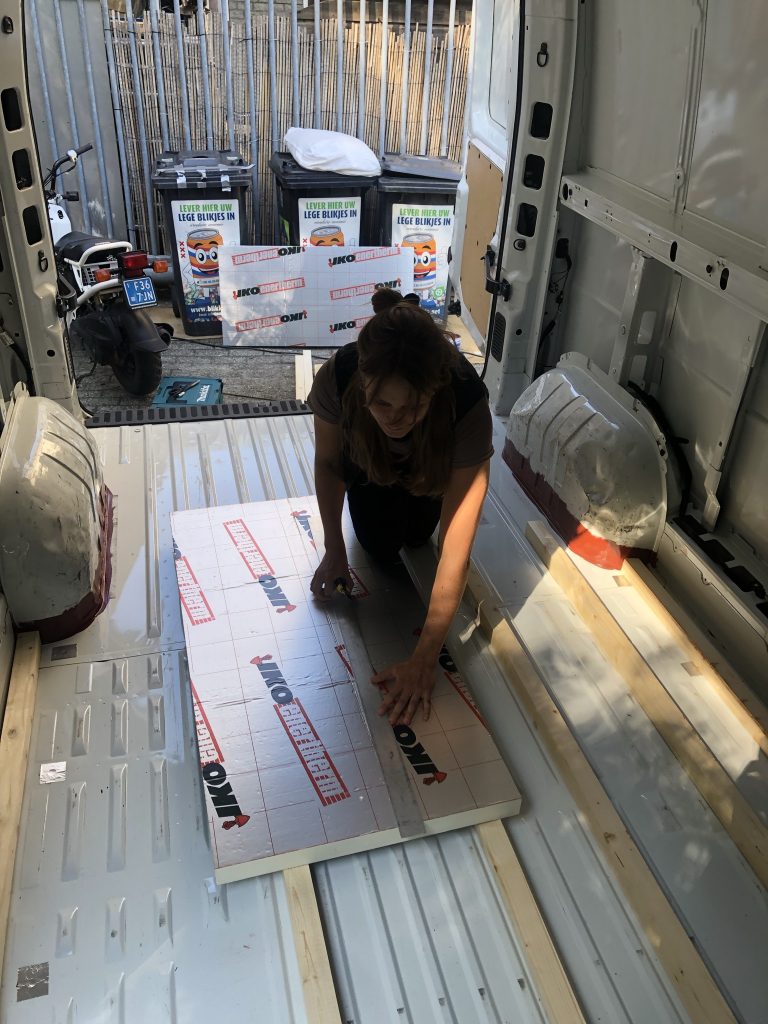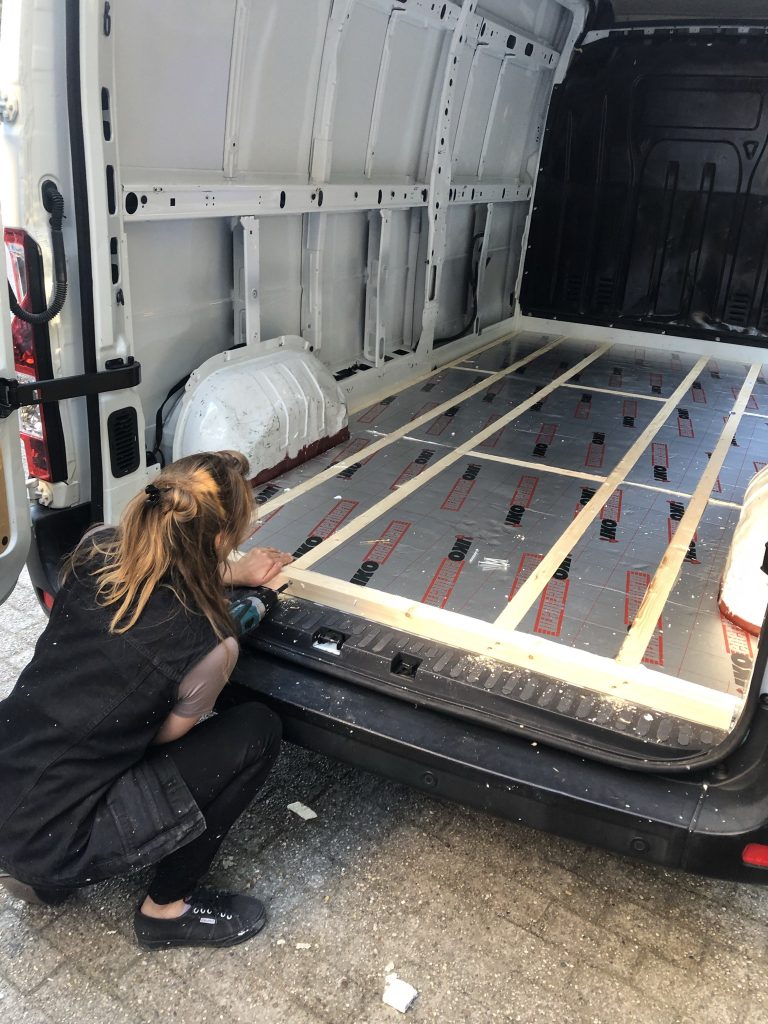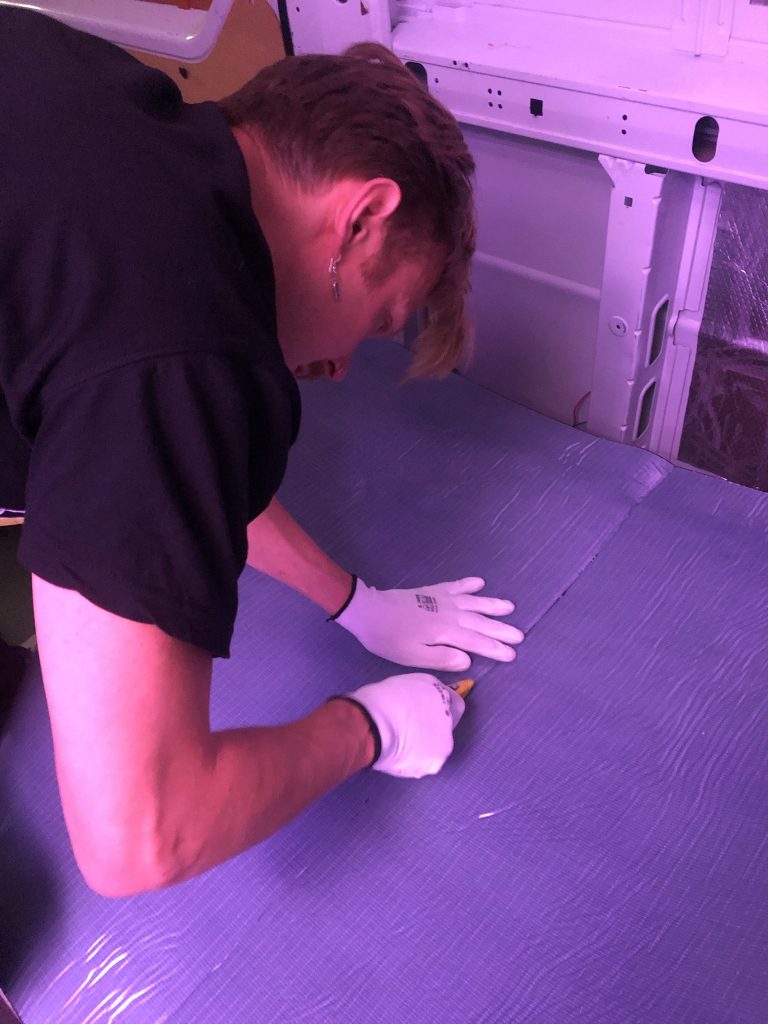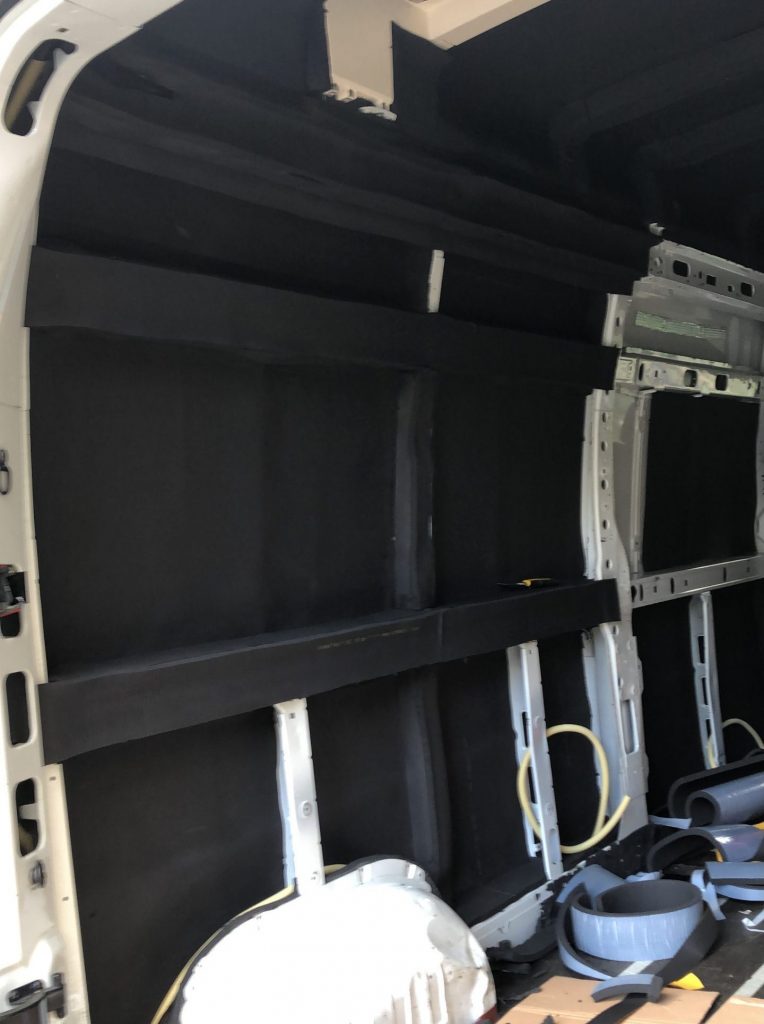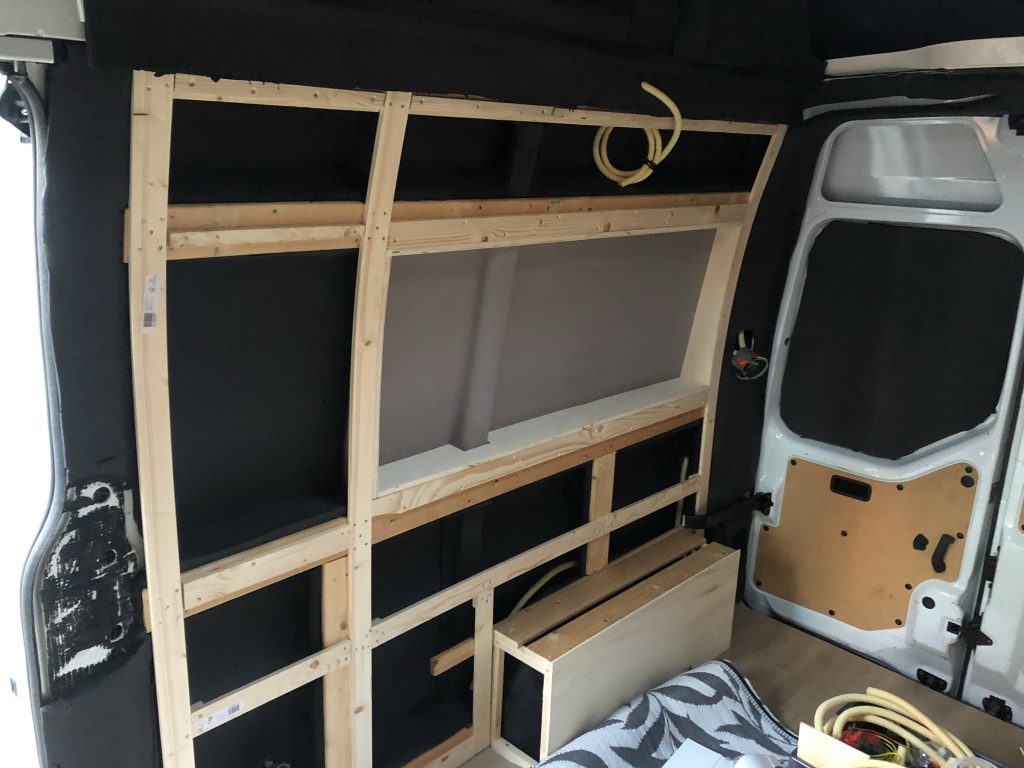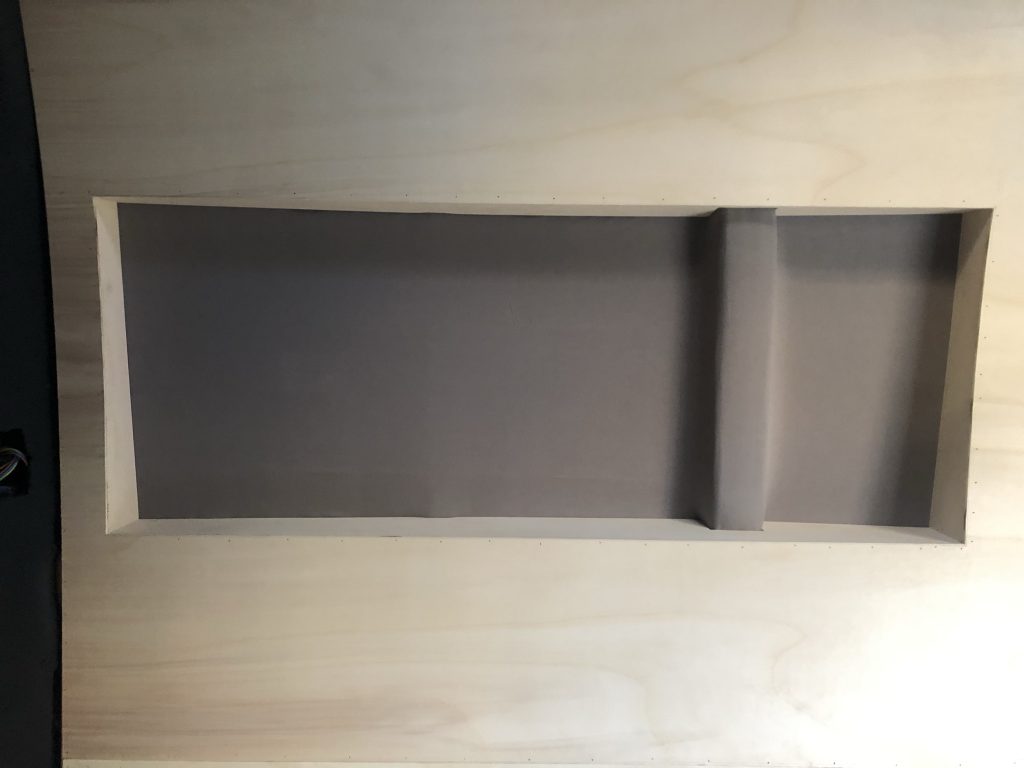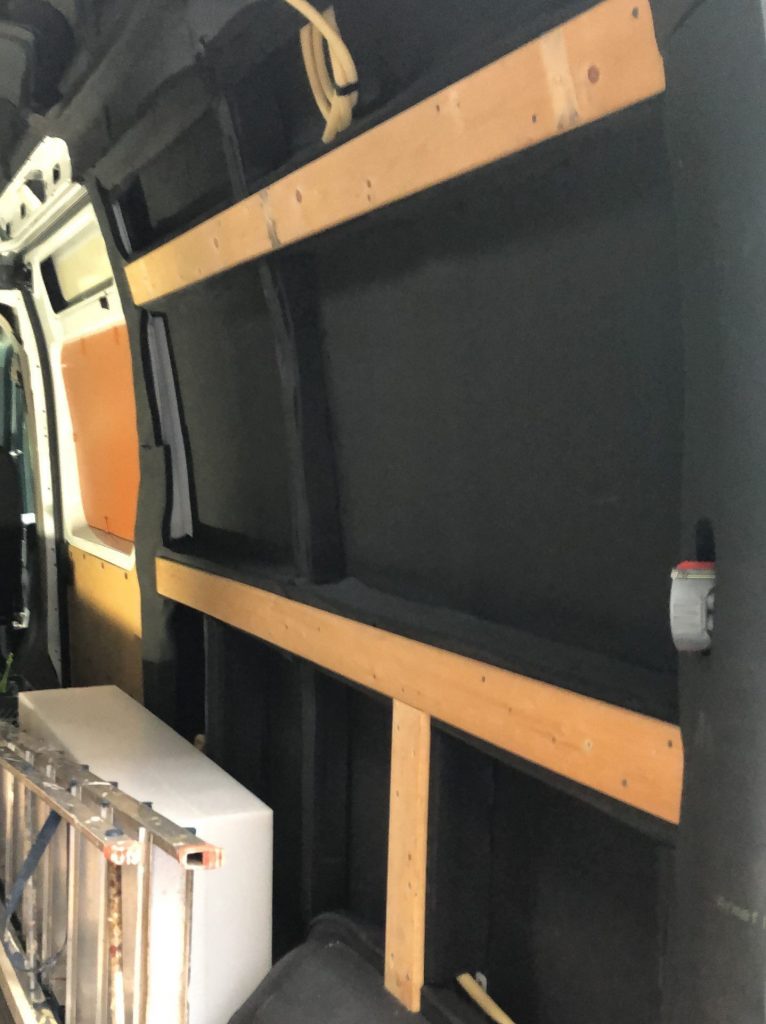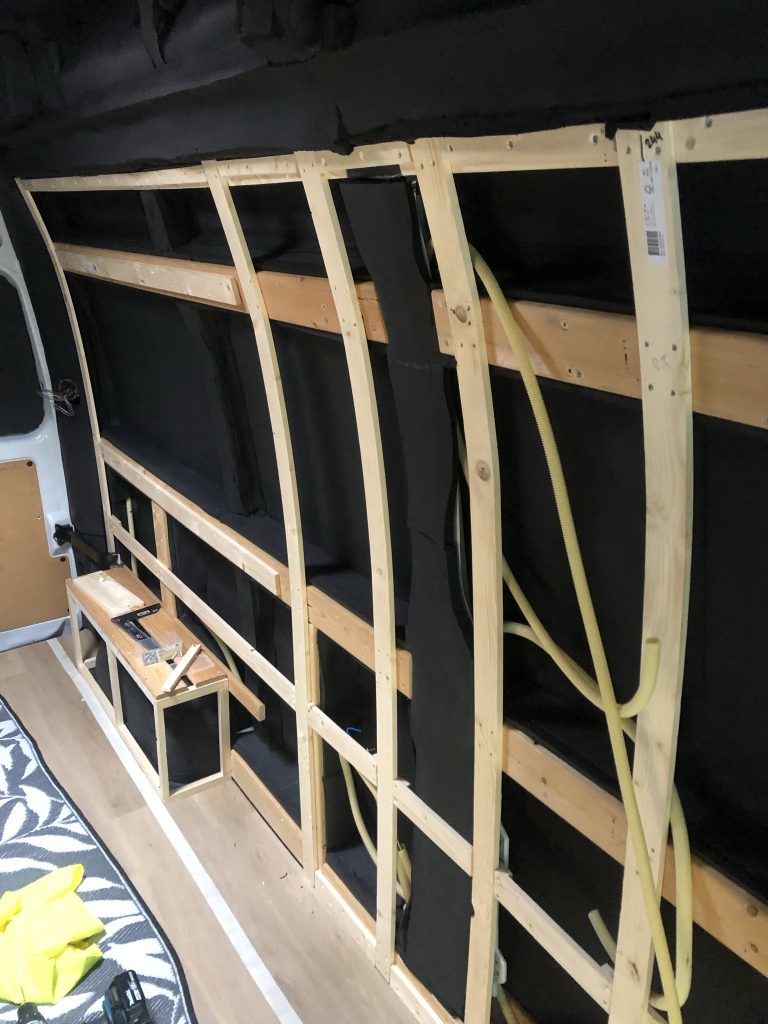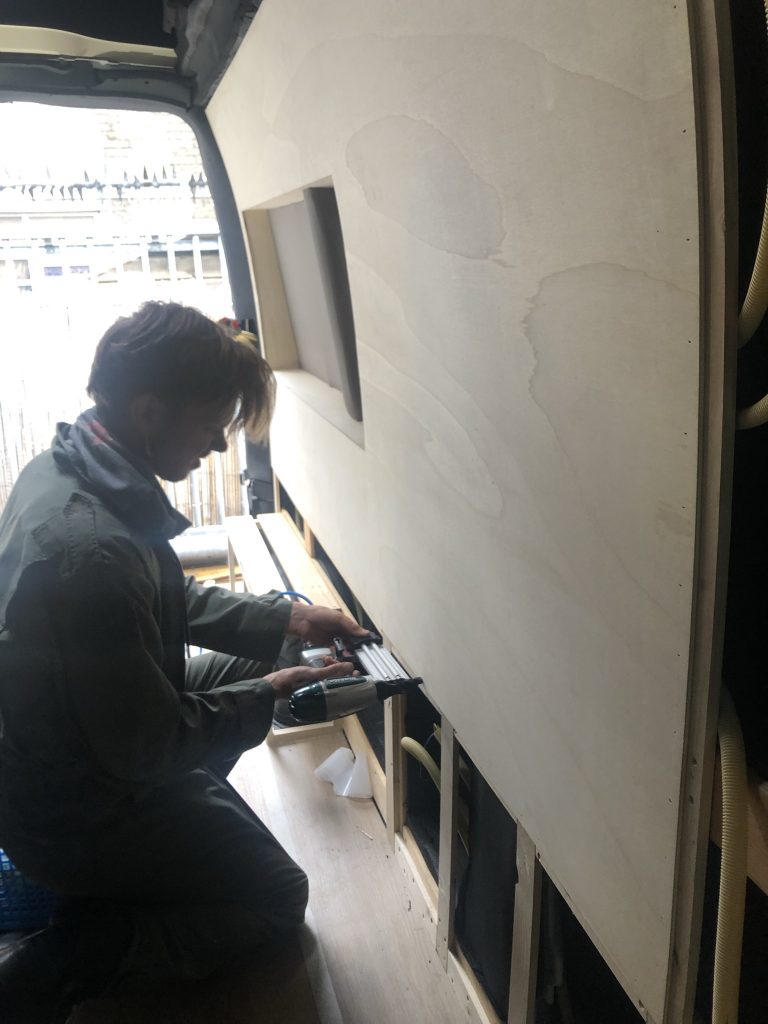Floor
The very first project we took on was the floor insulation. We used 5cm thick PIR insulation sheets, laid in a wooden frame. These have an Rd (insulation value) of 2.25, which seemed about right for a camper van.
After removing the multiplex floor, we thoroughly cleaned the metal van floor, which had collected a lot of sand and dust. With a clean floor, we made a layout and started assembling a wooden frame, in which we could perfectly fit the PIR sheets. We laid back the original multiplex floor on top of the insulation layer and screwed it to the wooden frame to have a solid floor.
